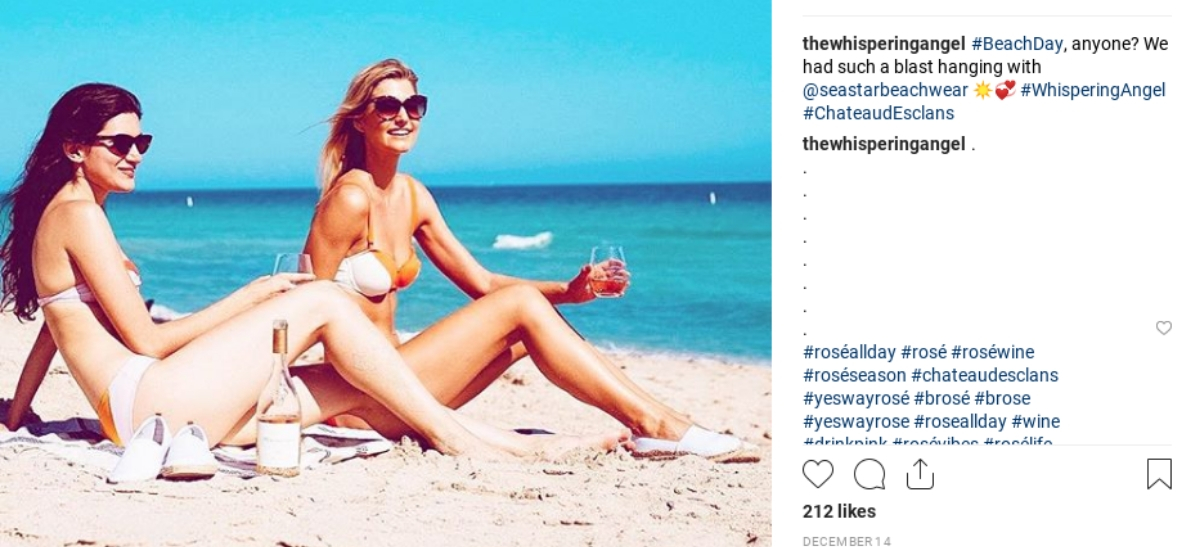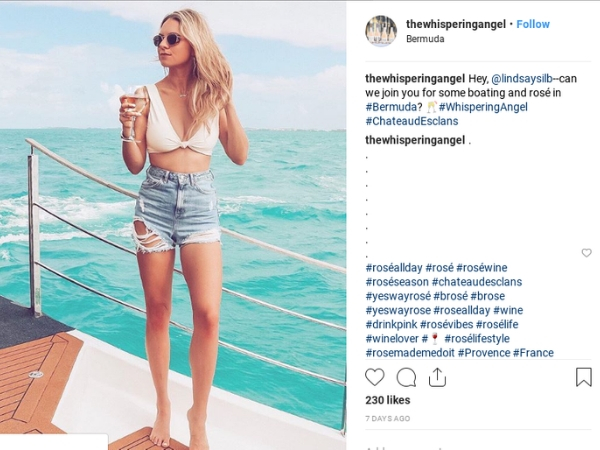Early Bird
Deadline
January 31, 2026
Judging
Date
May 18, 2026
Winners
Announced
June 10, 2026

As the wine industry becomes much more of a brand-driven industry, it’s perhaps no surprise that wine brands around the world are turning to the same types of digital marketing strategies as traditional consumer brands. Perhaps one of the least understood of these digital marketing strategies is influencer marketing, which relies on social media platforms such as Instagram to build buzz and momentum around a particular wine brand.
In the typical influencer marketing strategy, a wine brand will reach out to social media influencers with thousands – if not tens of thousands – of followers on platforms such as Instagram or Twitter, asking them if they would like to become a brand ambassador for their wine. It is purely a business transaction, with these influencers remunerated in a variety of ways in exchange for helping to move product. In addition to cash payments for every tweet or post they make, these influencers might get free product samples, invitations to VIP events, or special behind-the-scenes access to a winery or winemaker.
In some cases, these social media influencers will actually be professionals within the wine industry – such as celebrity sommeliers and top wine experts. But in other cases, these social media influencers will be much more of a “lifestyle expert.” They will often take photos of themselves drinking a particular wine in a glamorous locale, or with a group of very photogenic friends. The message may not be direct, but it can certainly be inferred: If you drink this wine, you will lead a similar sort of fabulous lifestyle.
And that’s perhaps why the topic of social media influencers can be such a contentious topic within the wine industry. Wine – and especially fine wine – is not a product that is especially suited for the same types of mass-market advertising and marketing tactics used by other retail consumer brands. If you consider that there are more than 100,000 different wine labels within the United States, it’s inconceivable that every single brand could possibly use influencer campaigns to move product. Only the very largest wine brands – such as E. & J Gallo Winery - have the time and resources to work with social media influencers. E.J. Gallo, for example, has used social media influencers for both its Liberty Creek and William Hill Estate wine brands.
Moreover, wine drinkers have always been known for their knowledge and sophistication – so it can be particularly jarring to see photos of young millennials posing in bikinis on a beach with a bottle of wine in their hand. While wine is definitely part of leading a certain type of lifestyle, the concern here is that wine brands may be losing some of their authenticity if they work with Instagram influencers who know little or nothing about wine.
There are plenty of examples of wine brands that have used social media influencers successfully to sell more wine. One of the best examples of a social media influencer strategy involves the French winemaker Chateau d’Esclans, which is the owner of wine brands like Whispering Angel and The Palm. Both of these have become especially social media-friendly social media brands. The Palm, for example, is a Provence Rosé with a tropical-themed label and one of the taglines for the brand is, “Save water, drink Rosé.” Promotional events sometimes involve influencers posing next to a giant inflatable pink camel with a glass of Rosé in their hand.
Whispering Angel, too, has had success using influencers as part of its social media campaigns. On the brand’s Instagram page (@TheWhisperingAngel), it’s quite common to see beautifully composed photos of young women enjoying a glass (or full bottle!) of Whispering Angel in exotic locations around the world. One recent Instagram post, for example, was a shout-out to one of its young social media influencers, with a simple caption, “Hey, @lindsayslib – can we join you for some boating and rosé in #Bermuda?” The post, of course, also included about 20 different hashtags for #Rose, everything from #YesWayRose to #DrinkPink.
So does all this exposure on social media actually help to sell more wine? According to retailers, the brand image created by social media can be very helpful in selling the first bottle of wine. However, in order to convert a wine drinker into a repeat customer, quality definitely plays a role. People won’t continue to buy a bottle of wine if it doesn’t taste good or if they feel that they are not getting a good value. While it’s not imperative for a wine to get a 90+ score, having some sign of recognition from trusted wine experts – such as a medal or award from a prestigious wine competition – can often go a lot further than a few beautiful images on Instagram.
Perhaps the best rule of thumb is that lower-priced, entry-level wines are more suited to influencer strategies. In this regard, a $10 bottle of wine is much more similar to a traditional consumer brand than a $30 bottle of wine. E. & J. Gallo Winery, for example, says that it is much more open to the idea of using influencers for its Liberty Creek brand at the lower end of the price spectrum. And it’s easy to see how wine using unconventional packaging – such as boxed wine – might be more suited to Instagram. The whole premise of boxed wine, after all, is that it is much more adaptable to a busy lifestyle.
For other brands at the higher end of the price spectrum, perhaps the best way to use a social media influencer strategy is by seeking out trusted names within the industry with a sizable social media presence who can authoritatively comment on your wine. For example, celebrity sommeliers like Rajat Parr (@rajatparr), who has nearly 45,000 followers on Instagram, can be much more effective at moving premium, prestige wines. On Instagram, for example, Rajat Parr recently profiled a 2000 vintage Clos du Jaugueryon, which is produced by organic winemaker Michel Théron in Bordeaux. According to Wine-Searcher, that bottle of wine would easily sell for more than $100 in the United States. While Rajat Parr was profiling the wine for his new “The Sommelier’s Atlas of Taste,” it gives you a good example of the type of wine that experienced sommeliers and wine experts might be more comfortable promoting.
So, if you’ve heard about other wine brands working with social media influencers, first take a step back and consider whether your wine brand is the right type of brand to be using this strategy. Authenticity matters a lot in the wine world, and when you do reach out to influencers, you need to have a certain degree of confidence that they will make the right type of ambassador for your wine brand. When there’s a good match, that’s when a social media influencer strategy might actually help you move cases of wine.
Enter your Wines now and get in front of top Sommeliers, Wine Directors, and On-Premise Wine Buyers of USA.
